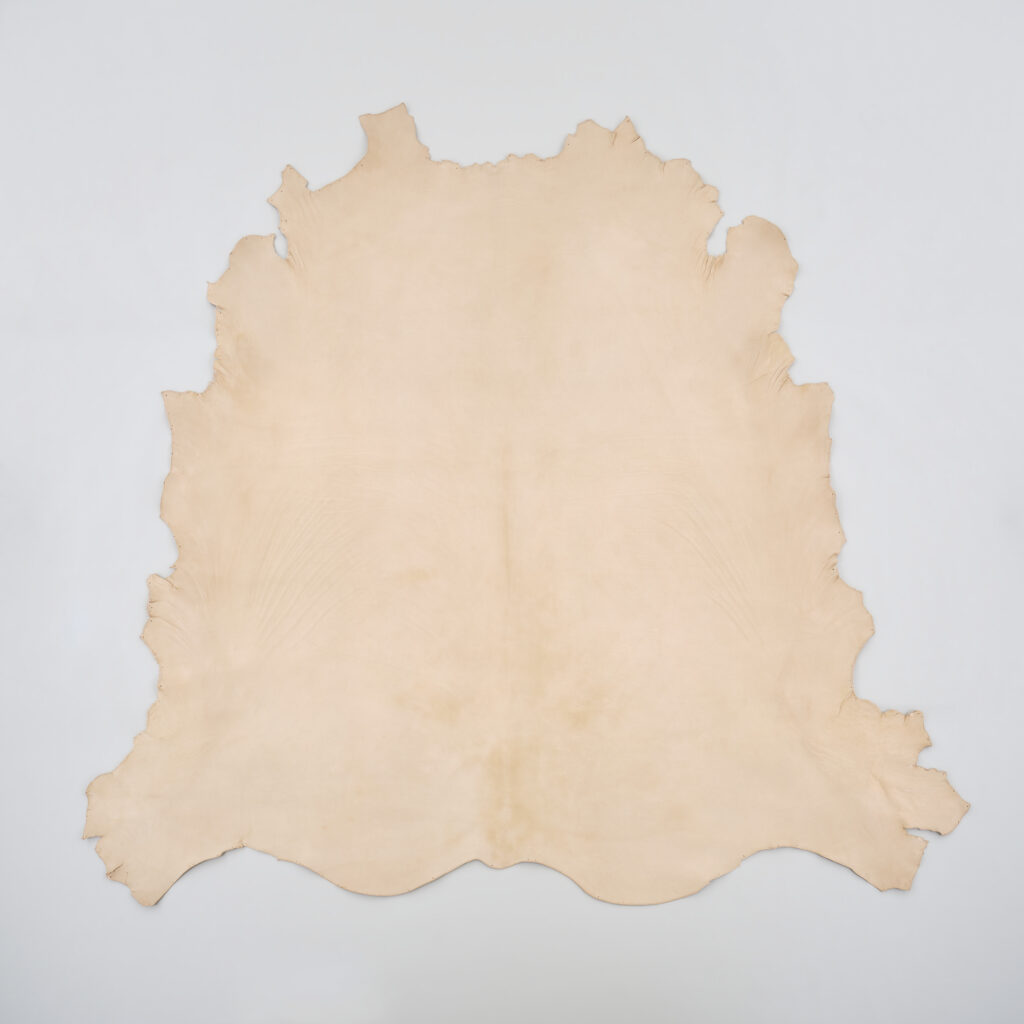
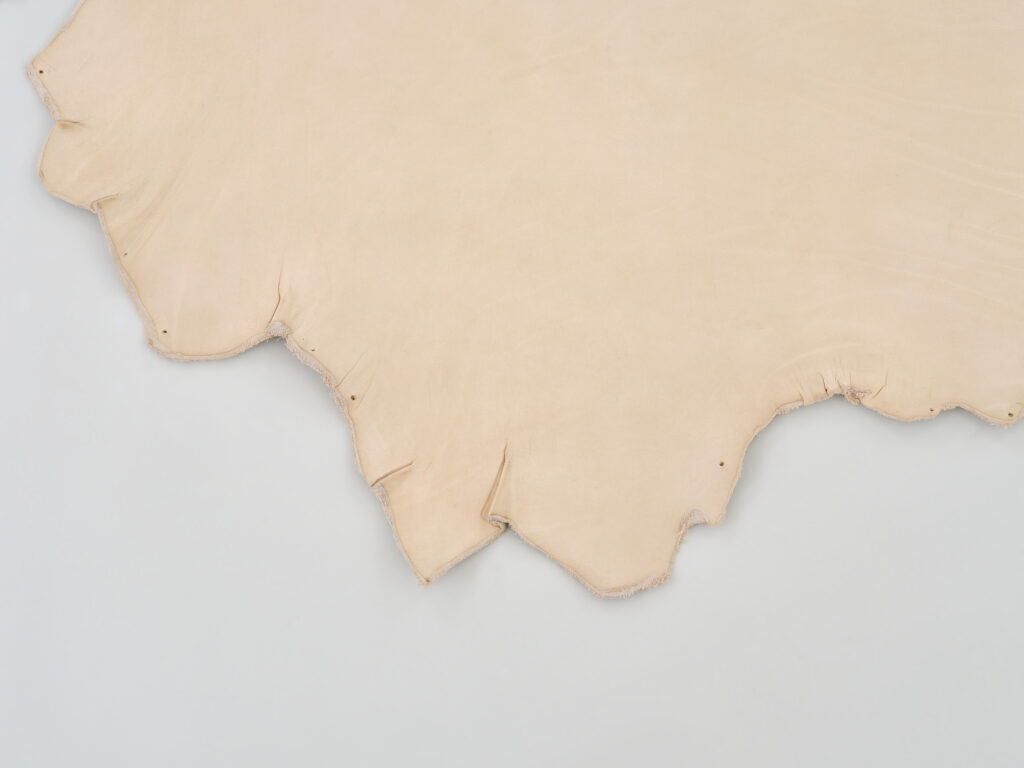
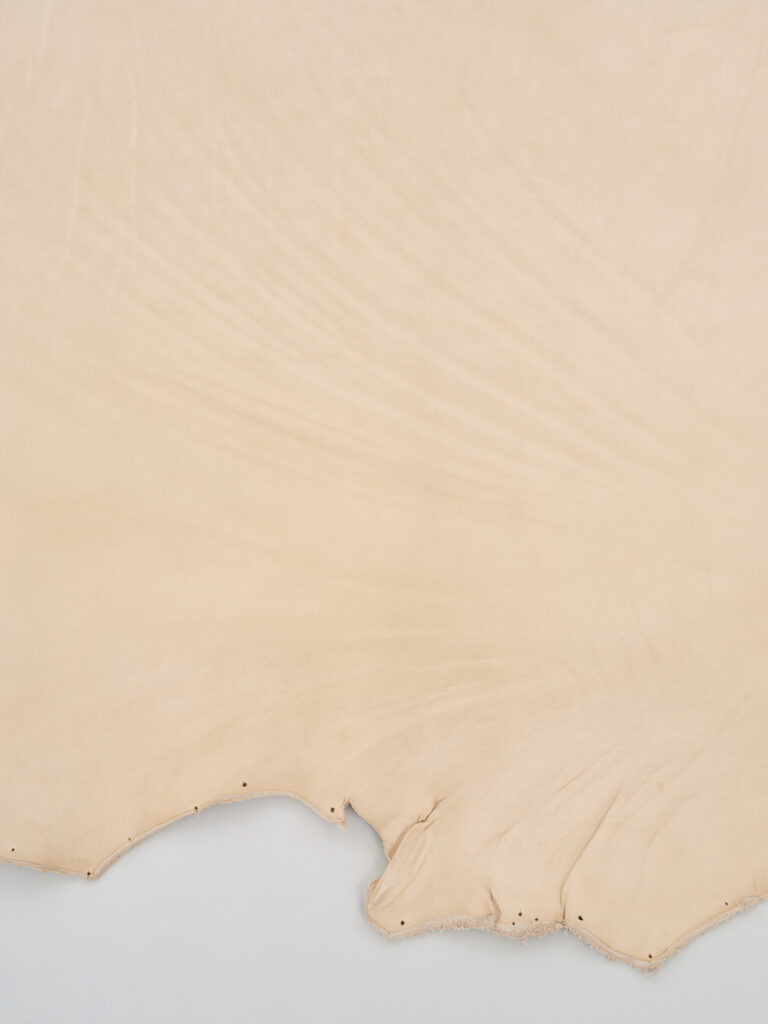
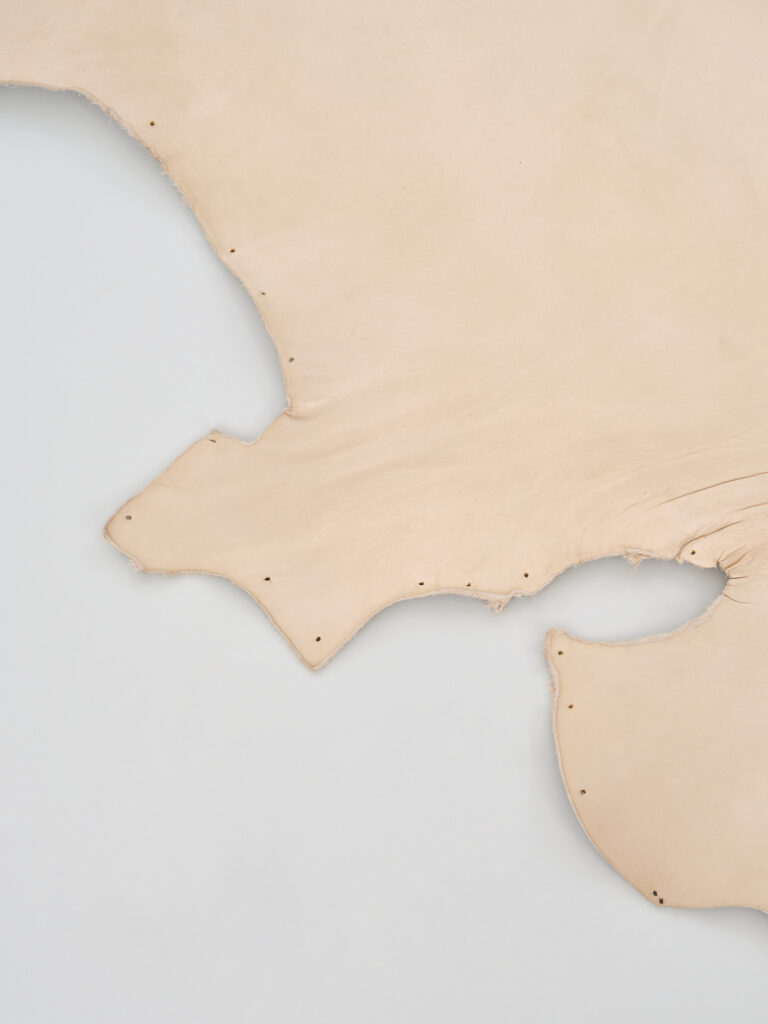
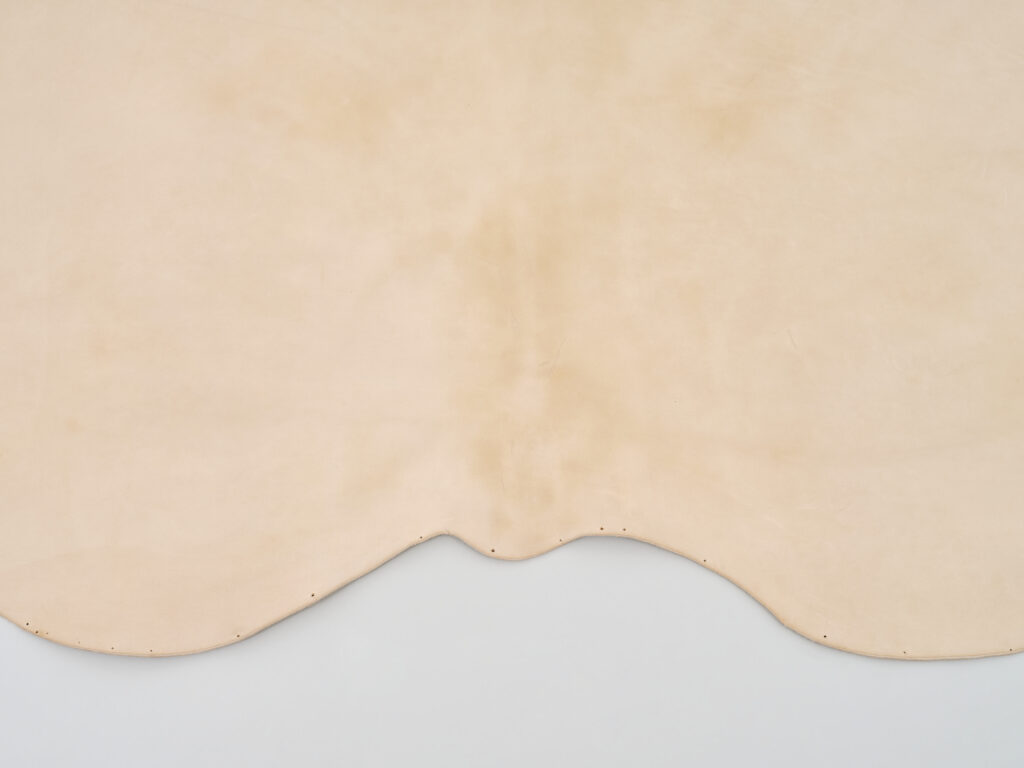
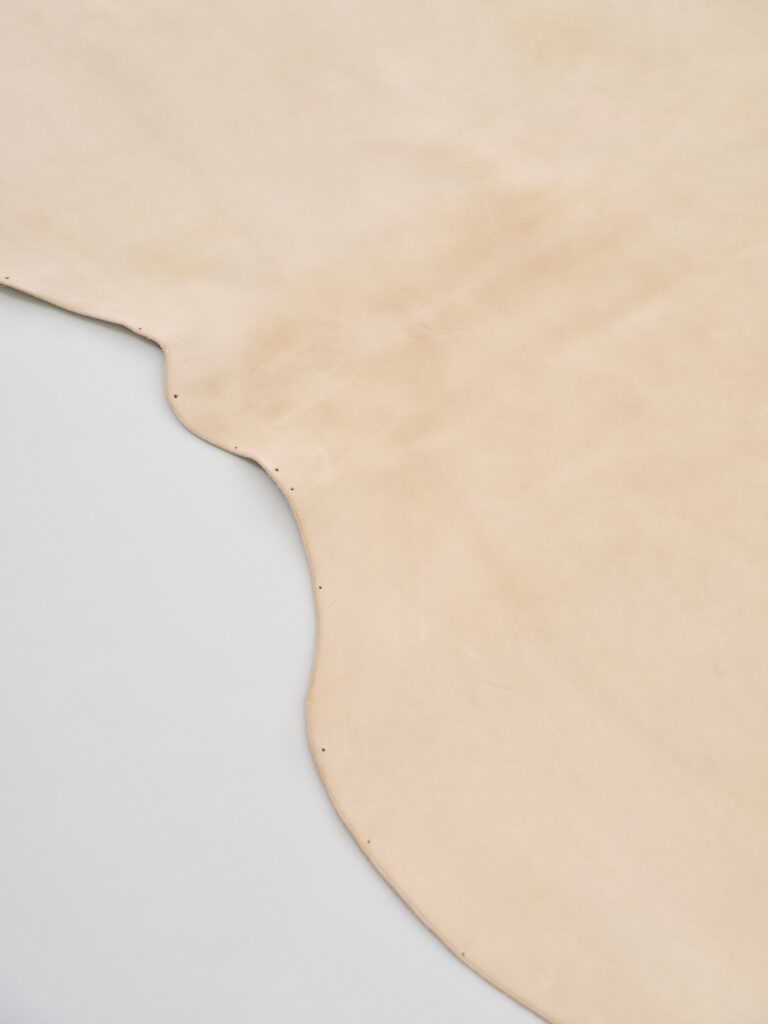
TITLE | leather lag tanning
DATE | 2023.2
TYPE | furniture, process
COLLABORATION | OOMARU LEATHER
PHOTO | Ichiro Mishima
We discussed tanning with the cooperation of a factory in Tatsuno City, Hyogo Prefecture, where the Ibo River flows into the Seto Inland Sea and leather processing has been popular for a long time.
Normally, during the tanning process, the leather is cut into half due to equipment limitations. However, this factory, which uses chrome tanning, can process the leather as it was, and we were totally into this.
We decided to use unfinished leather that is produced by removing the chrome and adding tannin after tanning. This material lets you enjoy the changes over time.
Mimosa and quebracho were used as tannins, and the amount was adjusted to determine the color and texture.
If you spill water on it, there may be hand marks on it. It may turn into a candy color, and the parts exposed to sunlight may also change its color. These traces show you the history of your daily-lives.
For drying, we used a hand-finishing method by craftsmen, which is becoming increasingly rare. They hammer the boards into the ideal shape using nails while applying tension.
This led to unique expressions of leathers. Leathers have the uneven spacing of the nails due to the fluctuations of hand work and the vitality of the shape of the unpeeled leather are directly being a design.
TITLE | 革の敷物 鞣し
DATE | 2023.2
TYPE | 家具デザイン、プロセス
DESIGN | 河内尚子
COLLABORATION | OOMARU LEATHER
PHOTO | 三嶋一路
瀬戸内海へと注ぐ揖保川流れ、古くから革加工が盛んな、兵庫県たつの市の工場の協力のもと、鞣しについて考えた。
通常、鞣しの工程で、設備上、皮は裁断され半裁となるが、クロム鞣を採用するこの工場では、そのままでの加工が可能であり、そこに価値を見出した。
鞣した後、クロムを抜き、タンニンを入れ、経年変化を楽しめる素上げとする。
タンニンは、ミモザやケブラチョを使用し、量を調節することで、色や手触りを決定した。
水をこぼしたり、手の跡がついたり、飴色になったり、日が当たる場所は変色するが、そこには使った人の生活の歴史が刻み込まれる。
乾燥は、職人も数少なりつつある、板に釘でテンションをかけながら打ちつけ、整形する方法とした。
手の揺らぎからくる釘の不揃いな間隔や、剥いだ革の形の持つ生命力がそのまま表現となった。